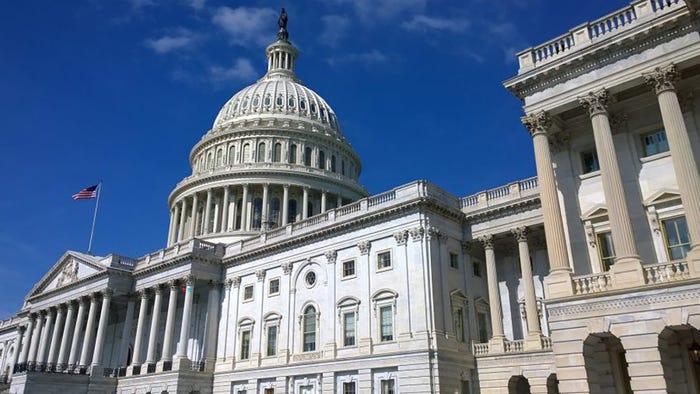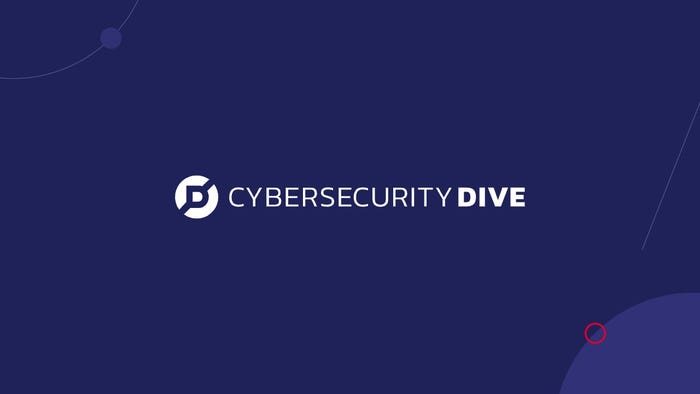
Next-generation 911 (NG911) systems represent a quantum leap forward for the public-safety community and the citizens that it serves. Internet Protocol (IP)-based and broadband-enabled, such systems are capable of considerably more than legacy 911 systems, which is why many emergency communications centers (ECCs) from coast to coast are clamoring to implement them.
The broadband capabilities of NG911 systems enable data to reach ECCs for the first time, because legacy 911 systems traditionally have been voice-centric, with very modest data capabilities. Moreover, NG911 systems enable transmission of high-bandwidth files, such as video and building floorplans. When this enormous volume of data is analyzed and contextualized effectively, it becomes actionable. In that form, the data dramatically enhances situational awareness, which in turn enables emergency responders to do their jobs more effectively and keeps them safer, resulting in more lives and property saved.
There is a great need in today’s emergency response environment to share data between NG911 systems and with other broadband networks—for example, public-safety broadband networks being implemented by the First Responder Network Authority (FirstNet) and others.

Moreover, NG911 systems rely upon geospatial data generated by geographic information systems (GIS) to route 911 calls to the appropriate ECC. This is a huge improvement, because geospatial data is much more accurate than the information contained in the legacy automatic-location-identification (ALI) and master-street-address-guide (MSAG) databases. This dramatically reduces the number of misdirected 911 calls. Even when calls are misdirected, an NG911 system can transfer them to the correct ECC much faster than legacy 911 systems—with the call information intact, which is something that legacy systems often cannot do.
In the legacy environment, a telecommunicator receiving a transferred 911 call often must contact the sending ECC to receive the call information verbally or reacquire information from the calling party. In an NG911 environment, the receiving ECC would receive the transferred call and its relevant information directly into its call-handling system and possibly its computer-aided dispatch (CAD) system.
The former approach introduces the possibility of error, and it takes seconds—sometimes minutes—for the call information to be captured by the ECC that received the misdirected call, if it can be captured at all. Both are bad outcomes in scenarios where lives are on the line and every second matters.
An NG911 system consists of two essential elements: next-generation core services (NGCS) and one or more emergency services IP networks (ESInets). The former are the functional elements that enable emergency calls to be handled by a NG911-compliant ECC. The latter provides the transport architecture required to deliver calls in an NG911 environment.

Three ways exist to implement an ESInet: contract with a commercial entity, such as a telecommunications service provider, to provision the network; self-provision it, which means that the network users would own, operate and maintain the network; or leverage a hybrid approach.
This article explores the advantages and disadvantages of these very different approaches.
Commercially provisioned ESInets
Traditionally, public-safety agencies have provisioned their 911 systems by contracting with commercial entities. In the legacy environment, this often meant working with their incumbent local exchange carrier (ILEC), if the ILEC also provided the agency’s selective router. If it didn’t, then the agency contracted with the selective-router provider that had contracted with the ILEC for circuits delivery.
There are several reasons for this. First and foremost, the agency doesn’t have to worry about implementing the system or maintaining it—it is a “one-stop shop, set it and forget it” scenario. In addition, commercial carriers already have miles of fiber-optic cable embedded in their own communications networks.
In this arrangement, the commercial entity controls all aspects of the network: hardware, software and connectivity, which almost always is fiber-optic cable, given the broadband requirements of NG911 systems. The fiber either is owned by the carrier or leased from other commercial entities.
A few challenges exist when provisioning an ESInet via a commercial entity. In an NG911 environment, bandwidth-intensive multimedia files likely will traverse the network. Consequently, one of the biggest challenges concerns the amount of bandwidth that is available to the agency.
Moreover, a public-safety agency’s communications needs evolve over time, which means that the bandwidth available to its NG911 system needs to be scalable and flexible. Many commercial carriers are adept at scalability and flexibility. They might allow agencies to dynamically adjust their bandwidth via an online customer portal, though restrictions often apply. They also might offer a sliding scale pertaining to the cost of the additional bandwidth. Often the per-megabit cost will decrease in proportion to the amount of additional bandwidth used.
Other carriers are less adept at scalability and flexibility, which makes provisioning additional bandwidth more challenging and complex. In such circumstances, the agency might need to renegotiate its services agreement with the carrier.
Sometimes the carrier will lack the network infrastructure needed to meet the agency’s bandwidth request. In some cases, the agency might be able to address this by leasing dark fiber from independent third-party providers, but doing so would require the agency to “light” the fiber. This requires the agency to implement, operate and maintain necessary hardware—e.g., routers, switches—which has resource implications and extra costs.
Another challenge is that any agency that has contracted with a commercial entity for its ESInet will have very little control over the network—hardware, software and fiber—if any.
This includes network monitoring and troubleshooting. Commercial entities generally are focused solely on one question—is the network operating? If it’s not, the commercial entity will resolve the issue, of course, but the critical question concerns how long that will take. The 911 systems operated by public-safety agencies are mission-critical, meaning that they must be continuously operational, because lives are on the line.
Commercial entities typically monitor their networks via automated processes, but the concern is whether their network monitoring centers (NOCs) and security monitoring centers (SOCs)—where any cybersecurity-related issues are handled—are robust enough to promptly address any alerts that the monitoring systems generate.
A corollary concern is the lack of visibility into the ESInet when the network is provisioned via a commercial entity. This visibility is essential to identifying the root cause of the problem, which in turn enables preventive measures to be taken to ensure that the problem doesn’t occur again.
Often, issues are lurking beneath the surface that could explode into a service-affecting problem. Consequently, agencies should consider hiring a third-party entity to independently monitor the network and all systems that connect to it—e.g., CAD, call-handling equipment (CHE) and land mobile radio (LMR)—as well as the interfaces that connect the network to those systems, to achieve the requisite visibility that the commercial entity likely is not providing.
Finally, it is imperative that the agency negotiates strong service-level agreements (SLAs) into its contract with the commercial entity. The SLAs need to be airtight; they need to define how the commercial entity will respond to various scenarios; and—perhaps most importantly—they need to define how the commercial entity will be held accountable for its response.
However, it should be acknowledged that it often is difficult to get commercial carriers to perform according to the SLA’s terms, even when those documents are airtight. Moreover, getting them to do so can take weeks, months, even years of badgering, which is a tremendous drain of resources.

Self-provisioned ESInets
Another way to implement an ESInet is for the agency to assume responsibility for all aspects: i.e., financing, hardware and software deployment, governance, operation and maintenance, and network monitoring and troubleshooting. The biggest advantage to this approach is that it gives the agency complete control over the network and thus its destiny.
For example, if the agency needs more bandwidth for its ESInet, and it is leasing its fiber connectivity, then it simply instructs the fiber provider to expand the service (at increased cost, of course). In the case of a dark-fiber network, the agency can increase the bandwidth on its own by upgrading the network interface cards (NICs) or increasing their number.
In this scenario, the agency can establish its network-monitoring and troubleshooting posture in any manner it chooses to ensure that the root causes of problems are identified. Doing so gives the agency a better chance of discovering and resolving issues. Better still, it gives the agency a better chance of preventing them from occurring.
Moreover, by assuming control over the network, the agency more easily can ensure that it receives desired solutions that might not be available from commercial entities. The agency will be able to select network hardware and software, transmission media—dark and/or lit/leased fiber, or microwave and/or T1 circuits in underserved areas)—and managed services, based on its unique wants and needs. The agency can procure each of these individually to achieve the most cost-effective solution, and can leverage other procurements—such as ESInet applications, e.g., CAD, CHE, LMR—to achieve desired efficiencies.
Often, implementing an ESInet that is agency-controlled makes it easier to do so regionally or statewide. Such arrangements enable the numerous agencies that will share the network to also share in its implementation and ongoing care. It makes even more sense, if the entities are able to leverage the ESInet to share applications that are not being shared currently.
A common misconception is that ESInets solely transport NG911-related data traffic generated by emergency calls, such as the data generated by a CAD system. In reality, if the ESInet is properly designed and implemented, it can perform myriad additional functions—for example, it can be used to backhaul radio traffic from the tower sites to the LMR system core, and to interconnect multiple agencies in a region.
This latter capability enables the regional sharing of systems—for instance, CAD, CHE and LMR—that creates economies of scale and often results in enhanced capabilities, especially for smaller agencies that typically lack the resources of larger agencies. But it should be noted that any regional ESInet implementation would require strong governance to ensure that all user needs are met, as well as equitable sharing of costs and operations/maintenance responsibilities.
Yet another tradeoff concerns the information technology (IT) assets that the agency possesses. Effective network monitoring and troubleshooting—as well as cybersecurity-related mitigation and prevention—require a considerable amount of IT acumen, and many agencies lack such acumen.
An ESInet is an IP-based network, and such systems are particularly prone to cyberattacks—and these attacks against government entities, including public-safety entities, are exploding in number and increasing in sophistication, thus requiring an equally sophisticated cybersecurity posture. Here too, a regional approach would be beneficial, because it enables multiple agencies in the region to pool their resources to do the job.

The Hybrid ESInet
In some cases, a hybrid approach to ESInet deployment makes sense, especially as a means of avoiding network outages. We know of one state, for example, that transports 911 traffic into ECCs over a network path provided by the commercial carrier and over a path provided by the state-level ESInet. The dual-path approach is designed to provide network diversity, resiliency and redundancy. Of course, this could be achieved simply by provisioning both network paths from the commercial carrier, but leveraging a state-level ESInet offers two big advantages.
The first involves cost. An agency that leverages a state-level ESInet typically will be able to do so at a cost that is less expensive—often far less expensive—than what the agency would pay if provisioning that path from the commercial carrier.
The second involves bandwidth, as a state-level ESInet typically is a much bigger pipe. So, an agency not only can transport far more data over that path, in many cases—where allowed by the relevant procurement laws and policies—it also can transport data generated by myriad other systems. Again, think about the advantages associated with CAD, LMR and even logging/recording systems leveraging this capability.

Don’t Wait to Get Started
The cost of standing up an ESInet—regardless of whether it is provisioned via a commercial entity or self-provisioned by the agency—is significant. Therefore, it might seem intuitive to wait in the hope that federal money might become available to defray at least some of the expenditure. However, it is our experience that local 911 authorities wanting to migrate to NG911 service are not waiting to begin or move forward with their implementations, for several very good reasons.
First and foremost, there is no guarantee that federal funding will materialize, and it is anyone’s guess regarding how much money will be available even if it does. Previously, the Middle Class Tax Relief and Jobs Creation Act authorized $115 million to support NG911 migrations. Not only did the grant money—jointly allocated by the National Telecommunications and Information Administration and the National Highway Transportation Safety Administration via the 911 Grant Program—not go very far, it wasn’t made available until 2019. Seven years is a long time to wait.
Last July, the U.S. House of Representatives passed H.R. 2, dubbed the “Moving Forward Act,” which called for $12 billion in federal funding to support NG911 initiatives. The provision was part of a $1.5 trillion package to support infrastructure improvements across a wide range of sectors, including highways, public transportation, airports, water distribution and broadband services. Unfortunately, the bill died in the Senate.
While there is hope that the notion of federal funding for NG911 will be resurrected at some point—$15 billion in NG911 funding has been proposed in the massive infrastructure bill introduced recently in the House—it is impossible to predict what the new Congress will approve.
Even if last year’s bill had passed the Senate and then was signed into law, there is no guarantee that any of the authorized funding would have been awarded directly to local 911 authorities—in fact, it probably wouldn’t have.
Based on history, it is reasonable to anticipate that NTIA and/or NHTSA would administer any future NG911-oriented grant program. It also is reasonable to think that they again would allocate grant money to state-level 911 authorities, which in turn would make it available for approved projects. (If your state does not have a state-level 911 authority, such as Nevada, it will be significantly more difficult to qualify for a federal grant.)
Moreover, projects that are statewide or regional typically receive priority—ESInets implemented by standalone 911 authorities are far less likely to receive federal grant money. In fact, to put themselves in the best possible position to qualify for a federal grant award, local authorities should band together. Examples of this being done well can be found with the Counties of Southern Illinois and Region 13 Task Force (in Pennsylvania) regional ESInets, each of which combined the efforts and resources of multiple counties and cities.
From a grant-application perspective, regional initiatives ideally would coordinate with the state-level 911 authority. A good example of this can be found in Pennsylvania, where several regional ESInets will be interconnected via a statewide ESInet that is being planned by the Pennsylvania Emergency Management Agency (PEMA).
Finally, most federal grant awards require a matching contribution from the recipient, although the language in the latest NG911 funding proposal does not include the need for local matching dollars. In addition, the amount of money received could fall short of what the implementation will cost.
To summarize, federal-grant support should be viewed as nice-to-have, not a must-have source of funding. With this in mind, 911 authorities shouldn’t delay their implementations of NG911—a technology platform that will be a quantum leap forward for emergency communications and response—in hopes of receiving it.
Conclusion
An emergency services IP network, or ESInet, is a critical component of an NG911 system, as well as the entire public-safety ecosystem. Implementing such a network can take very different paths, and each has unique advantages and disadvantages.
The path an agency chooses will depend heavily on its financial and information technology resources, whether it can coalesce regional support and the level of commitment it can and is willing to lend to the project.
Brian Melcer is an senior program manager for Mission Critical Partners, while Jackie Mines is a senior consultant. Both are certified emergency number professionals (ENPs). They can be emailed at [email protected] and [email protected].




